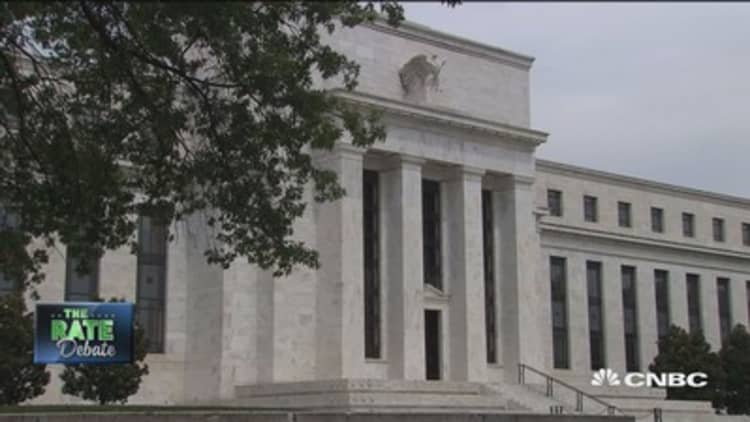
The last time the Federal Reserve raised rates seems like ages ago because it basically was.
Rates hit their peak in June 2006 at 5.25 percent. After that, the Fed announced cuts at 10 successive meetings, and rates have consistently been between 0 and 0.25 percent for the nearly seven years since the financial crisis. So it's no wonder why the definition of a rate hike may need to be re-examined.
The Federal Reserve is in charge of only one interest rate in the economy which is called the federal funds rate. This is the rate that banks charge each other for overnight lending. And while you rarely hear this term, it is, in fact, the Fed's primary mechanism for directly hiking or cutting.
By setting the federal funds rate, the central bank is able to influence other lending rates throughout the economy. This tool can be used to control monetary policy because lowered rates promote lending and faster economic growth. In contrast, raising rates enables the Fed to tap the brakes on growth.
Typically, when the Federal Reserve chooses to raise rates, the process should be straightforward and determined by how adjustments in monetary policy affect the overall economy. But with rates lowered to near zero, the Fed's decision is much more complicated.
The economy was still in a slump when rates were cut to zero. In an effort to stimulate growth, the Fed bought long-term bonds and pumped $4 trillion into the banking system. Now, with this significant amount of money already floating around, banks do not need to borrow from each other in the federal funds market because they have enough money of their own.
To solve this problem, the Fed pays banks interest on excess reserves, which induces banks not to lend and keep their money on account at the Fed. Therefore, loans have to be at a rate above what the Fed is paying banks not to lend.
The timing of the next rate hike is speculative, but it is expected to be between 0.25 and 0.50 percentage points (25 and 50 basis points). The Fed is not sure it can hit an exact target, so it keeps the funds rate in a range and aims for the midpoint. If the central bank does keep rates at zero after meeting this week, it could leave some wondering if a rate increase will ever come.
—Reported by CNBC's Steve Liesman and written by Krysia Lenzo.





